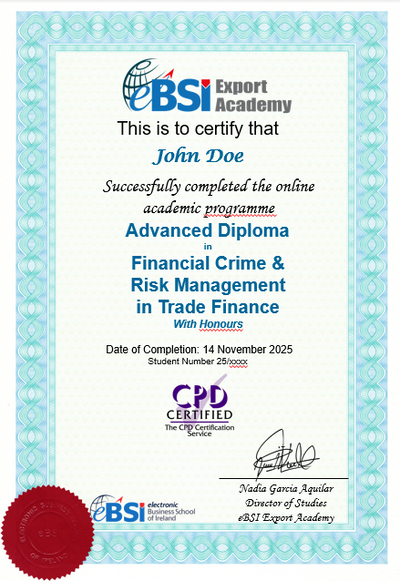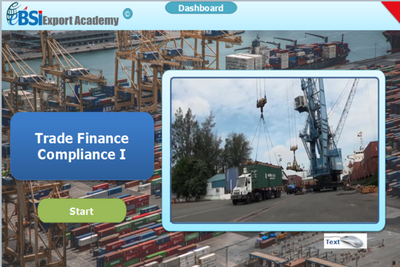URDG IMPLEMENTATION WORLDWIDE

After a rapid and efficient revision of the URDG, the new rules came into effect on 1 July. Still, the new URDG 758 will rightly remain high on the ICC Banking Commission agenda for some time, for the revision is not the end of the story. In fact, it’s the beginning of a no less important task: implementing the rules as efficiently as possible! Based on my experience with seminars and the on-going implementation of URDG 758 in my country, I’d like to share my thoughts with the readers of eBSI TradeBrief.
URDG 758 and national law
There might be some other provisions in the new URDG which are currently dealt with differently by national law. For example, guarantors should clearly understand the impact of sub-article 25 (c), which states that a guarantee shall terminate after three years from issue if the guarantee or counter guarantee states no expiry date of expiry event; or article 26, which concerns force majeure. Overall, though, I believe the scope for clashes between the law and the URDG 758 is very limited indeed. The drafters of URDG 758 were correct to tackle these important issues and create balanced international standards. Still, this needs to be clearly communicated and understood to be upheld by decision makers.
This change is a significant and welcome enhancement, since this common practice now has clear backing in the rules. URDG 758 throughout its text make clear that the party the guarantor receives instructions from, talks to, informs, goes to for reimbursement, etc., is the instructing party, not the applicant
(if they are different parties). However, guarantors should consider their relevant standard agreements to make sure they comply. The applicant does not apply for a guarantee, amendment, etc., unless it is also the “instructing party”. Therefore, the term “applicant” might be somewhat confusing in this context. Consequently, in case the applicant and instructing party differ, adjustments in the standard agreements might be necessary.
Amendments
URDG 758 includes new provisions on amendments, which is a great improvement over its predecessor. The provisions have been influenced by UCP 600 and, on one troublesome point, go a step further. The problematic issue in question occurs when the beneficiary does not notify its rejection or acceptance of the amendment advised to it. In such a case, the guarantor determines whether the amendment was accepted or not based on the presentation, if possible. URDG 758 sub-article 11 (c) indicates that in such a situation a presentation that complies only with the guarantee as amended will be deemed to be a notification of the acceptance of such an amendment.
Sub-article 10 (c) of UCP 600, on which this rule is based, does not include the word “only”, which can lead to confusion. Suppose the beneficiary says nothing and the presentation complies with the credit as amended, but also with the credit before the amendment was received? Can oneconsider such a presentation to be notification of acceptance of the amendment? Certainly not, since one cannot determine from the presentation whether the amendment has been accepted or rejected and, more significantly, the amendment remains valid and ready to be accepted or rejected at a later stage.
Another aspect of URDG 758 is worth reiterating here. Guarantors examine all data in presented documents required by the guarantee. First, the data must comply with the specific requirements of the guarantee, i.e., must meet the terms and conditions of the guarantee. Second, the data in the stipulated document must not be in conflict with other data in that document.
Moreover, the data in one document must not be in conflict with data in any other required document. And finally, the data in a required document must not be in conflict with any data in the guarantee, including those of non documentary nature. In my view it is important to emphasize this examination standard, which might cause problems for an unwary beneficiary.
Documents required to support a demand have usually been issued some time before any demand and primarily to meet the requirements of the underlying contract (not those of the guarantee itself). One example is copies of invoices and transport documents, which are often required under payment guarantees, that is, guarantees given on behalf of a buyer to a seller covering the buyer’s payment obligations. Interestingly ISP98, the rules for international standbys, state in article 4.03, “Examination for Inconsistency”, the following: “
An issuer or nominated person is required to examine documents for inconsistency with each other only to the extent provided in the standby.” ISP98 also cover the issue of non-documentary conditions differently in relation to examination of stipulated documents. In accordance with article 4.11, the guarantor (issuer) will not examine the data in stipulated documents for inconsistency (or conflict) with non-documentary conditions of the guarantee.

Force majeure
The new treatment of force majeure is one of the most important changes in URDG 758 and is arguably the most complex treatment of this issue in all of the ICC rules covering documentary instruments. It deals in a transparent way with three different situations which might be affected by force majeure:
1) the impossibility to present a demand;
2) the impossibility to examine a presentation;
3) the impossibility to pay a complying demand.
Obviously, the ambition of the URDG Drafting Group was to find a balanced solution, to provide protection to the beneficiary if the duration of the force majeure is relatively short-term (thus, the extension for a period of 30 calendar days from the expiry date stipulated in the guarantee), and also in cases when the demand was already presented but not yet examined or paid because of force majeure.
It was necessary to provide adequate protection to the guaranto vis-à-vis the instructing party and also to the guarantor towards the counter-guarantor when there is an indirect guarantee. Under URDG 458, the party that suffered the consequences of force majeure was the beneficiary. But URDG 758 significantly improves the position of the beneficiary. If the presentation of a demand is prevented by force majeure and the guarantee would expire during the period of force majeure, the guarantee is automatically extended for 30 calendar days from the original expiry.
This provision protects the beneficiary in the event of a relatively short-term force majeure event. However, if the demand has been already presented but has not yet been examined by the guarantor because of force majeure, the running of the time for the examination is suspended until the resumption of the guarantor´s business.
If the complying demand has been presented but not yet paid because of force majeure, payment is to be made by the guarantor when the force majeure terminates, even if the guarantee has expired. In these situations, protections for the beneficiary are considerably enhanced. Guarantors and counter-guarantors should be fully aware of these new provisions and make the necessary changes in their standard agreements, systems and procedures, if necessary, to comply with them.
Conclusion






